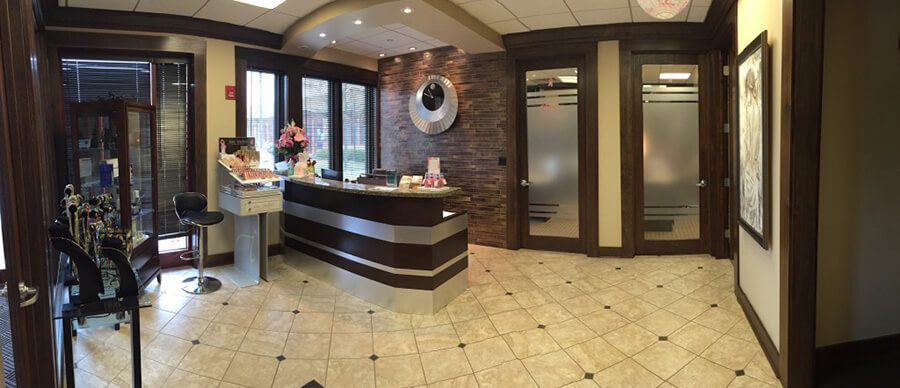Posted in Body Plastic Surgery
What Is a Brazilian Butt Lift?
A Brazilian Butt Lift (BBL) is a cosmetic surgery designed to enhance the size and shape of the buttocks using the patient’s own fat. Despite the name, it’s neither Brazilian nor a traditional lift. Instead, it’s an autologous fat transfer: surgeons remove fat from one area of your body (often the abdomen, flanks, or thighs) via liposuction and then inject it into your buttocks. This two-step process sculpts your figure by contouring unwanted fat away from areas like the waist while adding volume and curve to the hips and buttocks.
How the Procedure Works
During a BBL, you are under anesthesia. The surgeon first harvests fat from donor sites (such as the stomach, flanks, or thighs) through small liposuction incisions. A large volume of fat is typically collected – often 300–500 cc (1–2 cups) per side – to achieve noticeable buttock augmentation. The extracted fat is purified (washed and filtered) to isolate healthy fat cells for transfer.
Next, the surgeon injects the purified fat into the buttocks. Modern techniques ensure the fat is placed only in the layer above the gluteal muscles (in the subcutaneous fat). This avoids the deeper muscle tissue, where large blood vessels reside. Injecting fat under the muscle can cause serious complications (fat entering the bloodstream and traveling to the lungs). By staying in the superficial layer, surgeons significantly reduce this risk. Multiple tiny injections are used to distribute the fat evenly. Typically, more fat is added to the upper and outer portions of the buttock to create lift and projection, with less in the middle.
This procedure not only enlarges the buttocks but also contours the donor areas. In effect, a BBL is both a buttock augmentation and a body contouring procedure.
Recovery and Aftercare
After surgery, your body enters a healing phase. You will be wrapped in compression garments on both the treated abdomen/hip areas and the buttocks. Expect swelling, bruising, and soreness in the buttocks and the liposuction areas for the first week. Pain medication is prescribed to keep you comfortable.
It is critical to minimize pressure on the buttocks during healing. For the first 2 weeks, patients are typically instructed not to sit or lie directly on their back at all. You may sleep on your stomach or sides. If sitting is necessary (e.g. to eat), use a special “BBL pillow” or cushion that offloads weight from your buttocks. After the initial 2 weeks, sitting can be resumed gradually, often first only for short periods on a pillow. Heavy lifting and strenuous exercise should be avoided for about 6–8 weeks to protect the healing fat grafts.
Swelling can last several weeks. You will see an immediate volume increase in your buttock, but not all transferred fat will survive long-term. Typically 60–80% of the injected fat remains, meaning about 20–40% is absorbed by your body. Over the next 3–6 months, as swelling subsides, you will notice the final shape of your buttocks. To enhance fat survival, surgeons often recommend wearing compression garments on the donor sites and eating a high-protein diet to support healing. Many also advise avoiding prolonged sitting and keeping mobile once allowed.
Most patients can return to light daily activities by 2–3 months after surgery. Desk work can often resume in 1–2 weeks if it’s not physically strenuous. High-impact exercise and full workouts should wait until your surgeon clears you, usually around 6–8 weeks. Your buttocks will feel firm and tight initially, gradually softening as the tissues adjust.
Results and Benefits
A well-executed BBL yields a rounded, natural-looking buttock. Since it uses your own fat, the result tends to feel soft and moves naturally. Many patients appreciate the dual benefit of body contouring: removing fat from the abdomen or hips slim the waist while enhancing the buttock’s projection, often creating a more pronounced hourglass figure.
Other advantages include:
- Natural appearance: No foreign implants are used, so there’s no risk of implant complications. The shape is determined by how the fat settles in your body.
- Lasting results: Once the fat cells integrate with the surrounding tissue, they behave like your own fat. The enhancement can be permanent, provided your weight stays stable.
- Improved fit of clothing: Many patients find that swimwear and clothes fit better and feel more flattering on a fuller buttock.
- Safety vs. implants: A BBL avoids the risks of buttock implants (such as implant rupture or capsular contracture). In fact, plastic surgeons note that fat transfer BBLs look more natural and have more patient satisfaction when done properly.
Risks and Safety Considerations
While a BBL can be very satisfying, it is important to understand the risks. The most serious risk is a fat embolism, which can occur if fat is accidentally injected into a blood vessel and travels to the lungs or heart. This used to make BBL one of the highest-risk cosmetic procedures when older techniques (injecting into muscle) were used. Fortunately, current guidelines strictly prohibit fat injection into or under the muscle. By keeping all fat transfers in the fatty layer above the muscle, surgeons dramatically reduce this danger. ASPS reports that with these safety measures, the mortality rate has fallen to about 1 in 15,000 – comparable to a standard tummy tuck.
Other potential complications include:
- Bruising, swelling, and temporary discomfort: These are expected after any surgery.
- Infection: Rare if sterile technique and antibiotics are used.
- Fat necrosis: Some fat cells may die, causing small firm nodules; these often soften or diminish over time.
- Contour irregularities: Uneven fat survival might lead to minor asymmetry or depressions. Sometimes a touch-up procedure is needed for refinement.
- Blood clots: A low risk can be mitigated by early movement and following precautions.
- Sensory changes: Temporary numbness or tingling in the donor or injection areas can occur.
- Scarring: Incisions around the liposuction sites and buttocks will leave scars, but they usually heal thin and are hidden.
Overall, when performed by an experienced, board-certified plastic surgeon following modern protocols, serious complications are uncommon. Techniques such as intraoperative ultrasound to verify injection depth are now recommended for extra safety. Before surgery, discuss all risks thoroughly with your surgeon.






